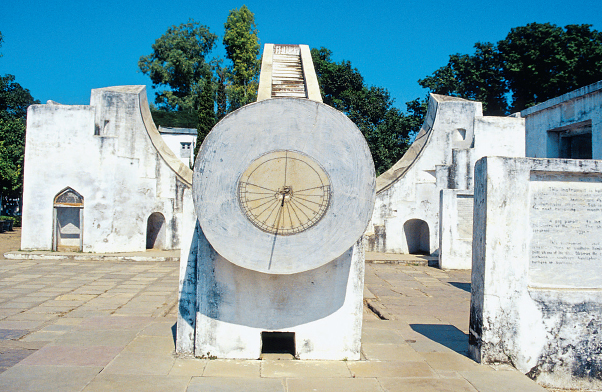Individuals in Society: Bhaskara the Teacher

In India, as in many other societies, astronomy and mathematics were closely linked, and many of the most important mathematicians served their rulers as astronomers. Bhaskara (1114–
Bhaskara was a highly erudite man. A disciple wrote that he had thoroughly mastered eight books on grammar, six on medicine, six on philosophy, five on mathematics, and the four Vedas. Bhaskara eventually wrote six books on mathematics and mathematical astronomy. They deal with solutions to simple and quadratic equations and show his knowledge of trigonometry, including the sine table and relationships between different trigonometric functions, and even some of the basic elements of calculus. Earlier Indian mathematicians had explored the use of zero and negative numbers. Bhaskara developed these ideas further, in particular improving on the understanding of division by zero.
A court poet who centuries later translated Bhaskara’s book titled The Beautiful explained its title by saying Bhaskara wrote it for his daughter named Beautiful (Lilavati) as consolation when his divination of the best time for her to marry went awry. Whether Bhaskara did or did not write this book for his daughter, many of the problems he provides in it have a certain charm:
On an expedition to seize his enemy’s elephants, a king marched two yojanas the first day. Say, intelligent calculator, with what increasing rate of daily march did he proceed, since he reached his foe’s city, a distance of eighty yojanas, in a week?*
Out of a heap of pure lotus flower, a third part, a fifth, and a sixth were offered respectively to the gods Siva, Vishnu, and the Sun; and a quarter was presented to Bhavani. The remaining six lotuses were given to the venerable preceptor. Tell quickly the whole number of lotus.†
If eight best variegated silk scarfs, measuring three cubits in breadth and eight in length, cost a hundred nishkas, say quickly, merchant, if thou understand trade, what a like scarf, three and a half cubits long and half a cubit wide will cost.‡
In the conclusion to The Beautiful, Bhaskara wrote:
Joy and happiness is indeed ever increasing in this world for those who have The Beautiful clasped to their throats, decorated as the members are with neat reduction of fractions, multiplication, and involution, pure and perfect as are the solutions, and tasteful as is the speech which is exemplified.
Bhaskara had a long career. His first book on mathematical astronomy, written in 1150 when he was thirty-
Within a couple of decades of his death, a local ruler endowed an educational institution to study Bhaskara’s works, beginning with his work on mathematical astronomy. In the text he had inscribed at the site, the ruler gave the names of Bhaskara’s ancestors for six generations, as well as of his son and grandson, who had continued in his profession.
QUESTIONS FOR ANALYSIS
- What might have been the advantages of making occupations like astronomer hereditary in India?
- How does Bhaskara link joy and happiness to mathematical concepts?

DOCUMENT PROJECT
What ideas and beliefs were central to Indian culture? Read a Persian account of medieval India, and then complete a quiz and writing assignment based on the evidence and details from this chapter. See Document Project for Chapter 12